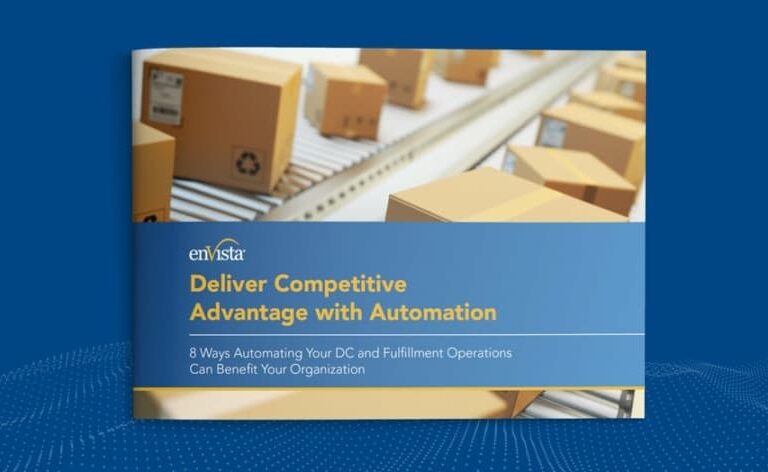enVista consultants have been engaged with several clients interested in automation investments to help address two key supply chain issues: lack of labor and throughput improvements for increased speed to market. Tom Stretar, Vice President of Technology at enVista offers his insight.
One of enVista’s clients, a catalog and ecommerce fulfillment provider, was interested in automation improvements involving their outbound packing and shipping operations. Their current design involved manual induction of picked items into a single, continuous loop conveyor system that routed picked units to pack stations in their outbound cartons. These cartons were one of six sizes that were pre-determined by the legacy warehouse management system (WMS) and its cartonization logic.
After packing of the outbound orders, the outbound parcels were then placed with one of three takeaway lines to manual void fill and in-line taping machines before merging back to a single line to the shipping sorter for outbound order routing by carrier.
Our supply chain and industrial engineering consultants helped justify improvements to the semi-automated packaging lines by focusing on four key components:
- Projected volume of shipping cartons eligible for processing through semi-automation
- Projected labor savings for the reduced number of shipping cartons requiring manual packing
- Additional labor required to apply labels for print and apply machine to read
- Increased additional productivity based upon reduced reliability on temporary labor
The analysis of the data resulted in an estimated savings in excess of $200K per year, allowing for the justification of the automation improvements to be approved.
A second project where our consultants are leveraging labor management and SKU level data to optimize supply chain execution is with a Fortune 50 beverage manufacturer. enVista is assisting its finance and operations teams by reviewing SKU data to eliminate the bottom 20 percent of SKUs based on shipping velocity from their distribution facilities.
From there, the client is able to determine if the eliminated SKUs should be consolidated at its manufacturing sites for transportation optimization decision-making, either by cross docking the slow movers back to the distribution center or via direct delivery from the manufacturing sites depending upon outbound volumes.
Tom’s Take: “Using labor management data like planned and actual performance metrics, along with item velocity and transportation routing information, can unlock hidden supply chain costs in your warehousing and transportation operations that can be optimized by running Kaizen events or multiple data analysis scenarios using AI and ML.”
Additional SKU data analysis has identified opportunities for improved facility layouts within the distribution centers, resulting in less time to pick and the usage of automated material handling equipment, such as layer pickers, to increase facility throughput.
Labor Union Interest Is on the Rise – Is This a Sign of the Times?
Last April, 71 percent of the Amazon fulfillment center associates from their Bessemer, AL facility voted not to be represented by the Retail, Wholesale and Department Store Union (RWDSU). The vote was contested due to alleged interference by Amazon, with the National Labor Relations Board (NLRB) authorizing a revote this year. The counting of the new unionization votes began on Monday, March 28, with results expected by the end of March.
In addition to the Bessemer facility, a group of former and current Amazon workers is pushing for unionization votes at four Amazon facilities on Staten Island, NY; with two facilities now approved for voting by the NLRB.
In addition to Amazon, several other large Fortune 500 organizations are filing for a union vote, including an REI retail store based in Manhattan, as well as a New York Starbucks, which currently has eight unionized stores and over 100 additional stores across 25 states. These are just a few of the higher-profile instances of the growing labor unionization interest in the United States.
Tom’s Take: “With all the macroeconomic conditions caused by the pandemic over the past two years, including the push for a national minimum wage increase, increased benefits and workplace safety, it is my opinion that we will likely see an increased number of unionization efforts. This will be especially evident in retail store environments, which continue to see growth in fulfillment operations via buy online and pickup in store (BOPIS) or curbside delivery options available to their customer base.”
Let us know what you think – let’s have a conversation.
About Tom Stretar:
Tom Stretar is a Vice President in enVista’s Technology Solution Group. With over 28 years of supply chain consulting experience, Stretar has helped transform the distribution operations of several Fortune 100 companies including AmerisourceBergen, Kroger, McKesson, PepsiCo and SYSCO.






